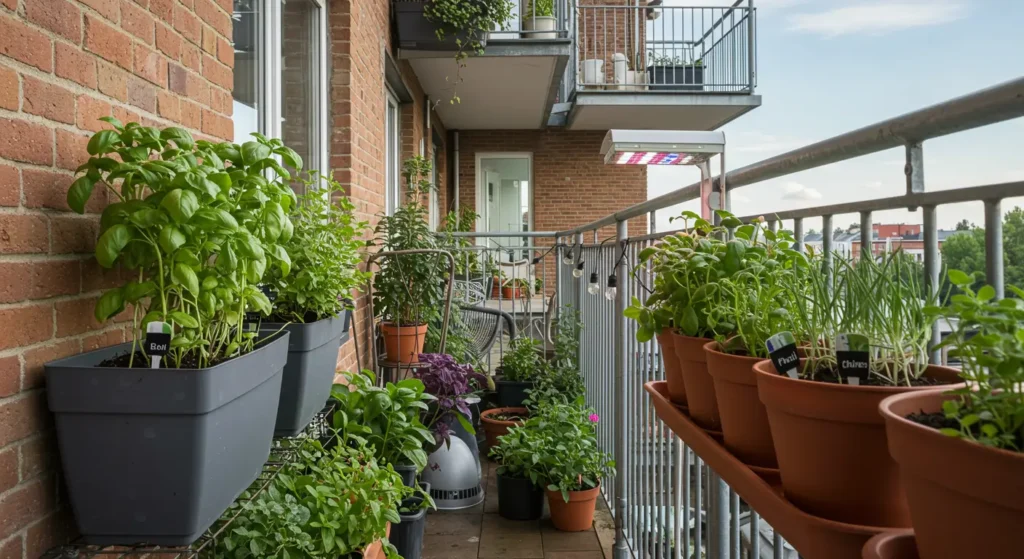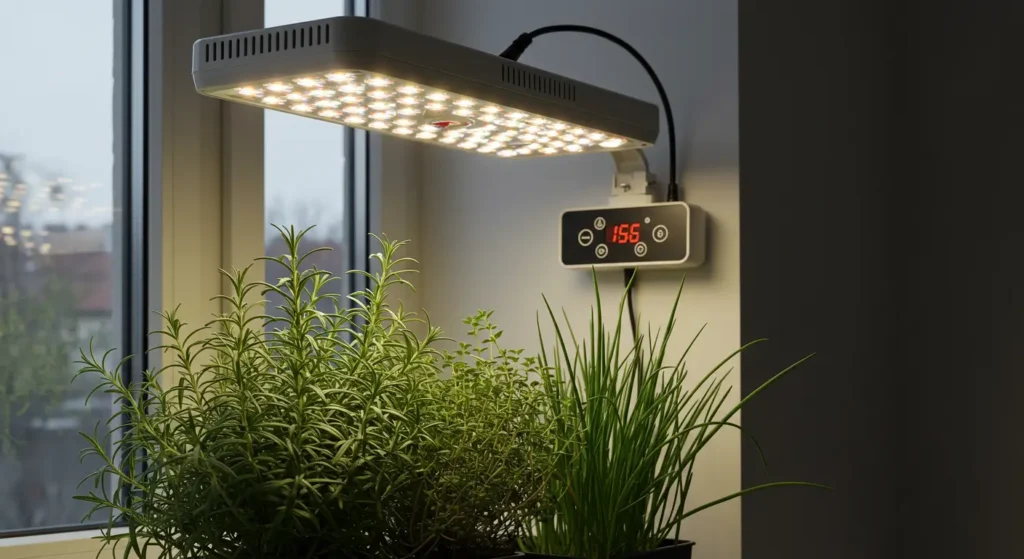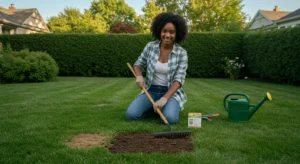Apartment greening used to sound like a luxury for people with houses and backyards until Sara, a junior architect in a ninth-floor London flat, proved otherwise. What began as a single pot of parsley on her windowsill (to save on takeout oregano) quietly grew into a punchy vertical of herbs, a rail planter of cherry tomatoes and a mossy privacy screen that made her neighbor ask for gardening tips instead of sugar. Within months her tiny patch softened the city noise, cut her grocery trips and most surprisingly became the place she chose for video calls, dates and Sunday mornings.
This guide gives you the exact, renter-friendly steps Sara used and twelve practical apartment greening hacks you can replicate whether you have a sunny balcony in Sydney, a shadowy flat in Berlin or a cozy studio in Nairobi. Expect low-cost swaps, landlord-safe installs, plant picks for every light level, and simple tech (self-watering pots, clip-on grow lights and sensors) so you can get real results without becoming a full-time gardener.
Why apartment greening matters (quick wins)
- Mental health: touching soil and nurturing plants reduces stress and improves mood.
- Practical gains: fresh herbs and salad greens cut food bills and boost meals.
- Air & comfort: plants improve perceived air quality and create a calming microclimate.
- Aesthetic & resale value: even tiny green corners lift a flat’s perceived value and appeal.
The 12 hacks (what they are, why they work, and how to do them)
1) Vertical pocket gardens – maximize every inch
Perfect for tiny balconies or narrow walls, vertical pockets turn a 60cm strip into a herb-and-salad machine. Use felt pocket planters or modular wooden racks fixed with removable hooks so landlords don’t complain.
How to do it: choose lightweight potting mix, stagger irrigation lines or use self-watering liners, place sun-loving plants at the top and leafy greens lower.
Quick product note: pocket planters, wall-mounted troughs and modular trellises.

2) Rail planters & hanging pots safe, stylish, removable
Rail planters are the classic balcony upgrade. Pick U-shaped brackets that clamp (not drill) to railings if you’re renting. For safety, use lightweight plastic or fabric pots and secure them with secondary ties.
Best plants: trailing nasturtiums, cherry tomatoes (dwarf), cascading petunias, and herbs.
Tip: add gravel at the base for drainage and a moisture-retaining layer above with coconut coir.3) Self-watering containers for busy people
If you forget to water, these containers are your lifeline. They have a reservoir below the soil that wicks water up, reducing watering frequency and protecting roots from overwatering.
How to choose: deep enough for herbs (15–25cm), with a fill tube for easy refills and an overflow to avoid root rot.
Low-cost hack: make your own with two buckets and a wicking rope.
4) Low-light houseplants for dark apartments
Not every flat gets sun. Choose tough, stylish plants that thrive in shade: snake plant (Sansevieria), pothos, ZZ plant, cast iron plant and philodendron.
Styling tip: group plants in clusters to create humidity pockets and visual impact.
5) Compact edibles – herbs & micro-veg on windowsills
You don’t need acres to grow food. Parsley, basil, coriander, mint, and salad greens fit windowsills and narrow shelves. Microgreens yield fast and require little space, harvest in 7–14 days.
Recipe-ready idea: keep a small herb trio (basil, parsley, chives) near the kitchen door.
6) Micro-greens & countertop kits – instant wins
Plug-and-play kits are great for beginners and gift-friendly. Micro-greens are nutrient-dense and harvest quickly; a few trays produce enough for a family salad each week.
Maintenance: keep humidity consistent and harvest with scissors.
7) Grow-light setups, beat winter and low light
For north-facing flats or winter months, a simple LED grow light on an adjustable arm saves the season. Choose full-spectrum LEDs with wattage appropriate to the plant load (for herbs, 20–40W per 0.5m² as a starting rule).
Placement: 20–30cm above plants, connected to a timer for 10–14 hours daily.

8) Terrariums & moss walls ; landlord-friendly, low-maintenance
Terrariums are enclosed micro-environments for tiny ferns and moss; moss walls are lightweight panels that add deep green privacy. Both are removable and renter-safe.
Build tip: sealed terrarium for low-light; open-top for succulents.
9) Climbing plants for privacy & shade
Use lightweight trellis panels or tension wire systems to grow jasmine, climbing ivy, or clematis — they create a living privacy screen and soften hard balcony edges.
Safety tip: check weight limits; use lightweight planters and train vines gently to avoid wind-snag risk.10) Smart planters & watering sensors; garden tech for the lazy (and proud)
Smart planters that monitor moisture and automate watering appeal to gadget-lovers. They’re also excellent affiliate opportunities.
What to look for: battery life, app connectivity, refill ease and size.
11) Small-space composting; bokashi & worm bins
Close the loop even in flats. Bokashi bins and small wormeries fit under a sink or in a balcony cupboard and create excellent compost for container plants.
Tip: bokashi is faster and less smelly indoors; worms prefer a shaded balcony corner.
Image prompt (composting corner): see image prompts.12) Seasonal styling & maintenance calendar
A simple calendar (plant rotation, feeding, pruning, pest checks) keeps apartment gardens healthy. For tropical or equatorial readers (Nairobi), adjust watering frequency; for temperate cities (London, Toronto), plan for frost protection and winter lighting.
Monthly quick list: feed monthly, prune as needed, check drainage each rainfall, wipe leaves to aid photosynthesis.
Sara’s ninth-floor patch (numbers)
- Initial setup cost: vertical pockets (£45), rail planter (£25), three grow lights (£60), soil & compost (£25) → £155 (≈ KSh 29,000).
- Monthly upkeep: seeds, pots, occasional fertilizer → £8–12.
- Harvest value: fresh herbs + salad greens saved ~£20/month on groceries.
- Payback: about 8 months to recoup setup costs in grocery savings, plus mental health and aesthetic gains that aren’t on the spreadsheet.
This case mixes real prices and conservative yields so readers have a believable financial picture.
Product & purchase guide (affiliate-ready categories)
- Grow lights: small full-spectrum LEDs; look for energy efficiency and timers. Price: $25–$120.
- Vertical systems & pocket planters: weatherproof material and easy fixings. Price: $20–$150 depending on size.
- Self-watering pots: reservoir depth and overflow are key. Price: $10–$60.
- Smart sensors & planters: battery life and app reliability matter. Price: $30–$200.
- Soil & amendments: lightweight potting mix, slow-release fertilizer, and coco coir. Price: $10–$40 per bag.
- Composting kits: bokashi starters and small worm bins. Price: $25–$80.
Purchasing tip: match product specs to your balcony load-bearing limits, wind exposure, and landlord rules. Offer a budget, mid-range, and premium option for each category on your product pages.
FAQs
Q: Will plants damage my balcony? A: Not if you manage weight (use lightweight pots), ensure drainage (catch trays), and use removable fixings for railings.
Q: Which plants are best for north-facing flats? A: Snake plant, ZZ plant, pothos, cast iron plant, and certain ferns.
Q: How much light do herbs need? A: Most culinary herbs need 4–6 hours of bright light; otherwise use a grow light for 10–14 hours daily.
Q: Can I compost in an apartment? A: Yes, bokashi bins and small wormeries are designed for indoor use and have minimal odor when managed correctly.
Q: Is a balcony garden worth the cost? A: Financial payback is usually within 6–12 months for edible-heavy setups, but the mental-health and lifestyle benefits are immediate and substantial.

Want a ready-made starter plan? Download our Free Balcony Green Starter Checklist & 4-Week Plan — includes a shopping list (budget & premium options), a week-by-week schedule and a printable maintenance calendar. Visit the Eden Lawn & Garden Centre product page to shop the gear we recommend.







